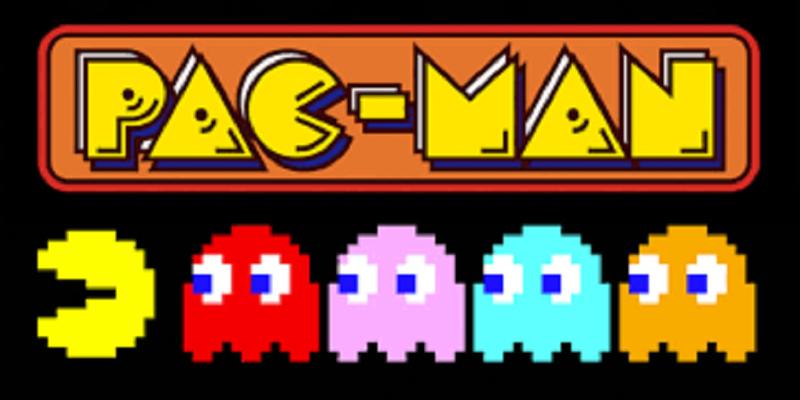When Pac-Man Munched His Way Into Our Hearts
By | July 5, 2022

On May 21, 1980, Pac-Man was released in Japan; in October of that year, it appeared in the U.S. Pac-Man fever quickly swept the nation. By 1981, there were approximately 100,000 Pac-Man machines, and around 250 million games were being played each week.
The Creator Wanted A Game Everyone Could Enjoy
Toru Iwatani, the game’s designer, had no experience when he worked on it for Namco. Prior to the invention of Pac-Man, the games such as Space Invaders, Tail Gunner, and Asteroids had violent themes, so Pac-Man was a movement away from video games centered around shooting your enemies. As Iwatani said in 1986, “There were no games that everyone could enjoy, and especially none for women. I wanted to come up with a 'comical' game women could enjoy.” So, he started thinking about ideas focused on eating, which evolved into the central concept of Pac-Man. Pac-Man chews his way through pills, fruits, and power pellets, which were originally shaped like cookies. Pac-Man himself may be a pizza missing a slice, or more likely a kanji character representing mouth, but rounded out. As for the other elements of the game, Iwatani took inspiration for this from the things around him. As he has explained, the idea of eating the power pellets and powering up was inspired by Popeye, and the ghosts were inspired by the manga he had seen as a child.

The Game Revolves Around Eating
The name of the character, and therefore the game, is derived from the Japanese onomatopoeia for munching, which is “puck-puck” or sometimes “paku-paku”. For obvious reasons, the name of the game had to be changed for Americans when Midway released it in the U.S. Incidentally, for its gaming console, Texas Instruments had a game called Munch Man which followed the same concept but ate different characters (20 different shapes in all) and laid down chains rather than eating pellets.
The Basics Of The Game
In case you don’t remember the basics of the game, the player manipulates Pac-Man using either keyboard arrows or a joystick. Pac-Man moves through the maze, consuming lines of 240 dots, all the while avoiding the ghosts. Each of the four ghosts has a different attack strategy; if they didn’t they would attack in a straight line. Blinky (the red ghost officially named Shadow) doesn’t start in the “ghost house,” always follows the player, and increases his speed. Pinky (pink) is programmed to be ahead of Pac-Man and is considered to be an ambusher. The position of Inky (light blue) is determined by the relative positions of both Pac-Man and Blinky, and he seems to be the most erratic. The final ghost, Clyde (orange), seems to flee from Pac-Man. To make things more challenging, the ghosts can also enter one of three modes at any time: Chase, Scatter, and Frightened. Frightened Mode is the one that is perhaps best recognized, as it occurs when Pac-Man eats one of the four Power Pellets and the ghosts turn blue and run away. If he is able to gobble a ghost, the eyes run back to the “ghost house” where they wait to rematerialize when Frightened Mode ends. This gives him a little time to clear the board without having to run from the ghosts. If Pac-Man collides with a ghost while the ghost is not in Frightened Mode, Pac-Man loses a life.

The Game Consumed A Lot Of Quarters
In 1982, it was estimated that 30 million Americans spent $8 million in quarters a week playing in arcades or bars. This was not a quiet game, so the arcades were loud and packed; many towns passed statutes to regulate or restrict Pac-Man (similarly they had regulated pool tables and pinball machines to fight “immoral” behavior like gambling). Perhaps the irony that this was an innocuous, nonviolent game was lost on them. For an individual under the age of 21 to play video games in Des Moines, Iowa, for example, they had to be accompanied by an adult. In certain jurisdictions, arcades had to be a certain distance away from a school, and in others, they couldn’t sell food or alcohol. Coin-operated arcades were completely banned in Marshfield, Massachusetts.
Pac-Man Fever
With the popularity of Pac-Man came spin-offs with slight variations, particularly Ms. Pac-Man, which was created by Midway, and first released in 1981 as an unauthorized version of the game. Namco quickly made it an official game. Over time, Pac-Man was also available on game consoles, home computers, and hand-held devices. It also made its way out of the game, appearing on t-shirts, mugs, plush dolls, puzzles, wind-up toys, pajamas, a Hanna-Barbera cartoon that ran from 1982 to 1984, and a song, “Pac-Man Fever” which, in 1982, reached No. 9 on the Billboard Top 100 Chart. In 2010, the game was honored with a Google doodle, and after it was played by more than 1 billion people worldwide, it got its own page.
